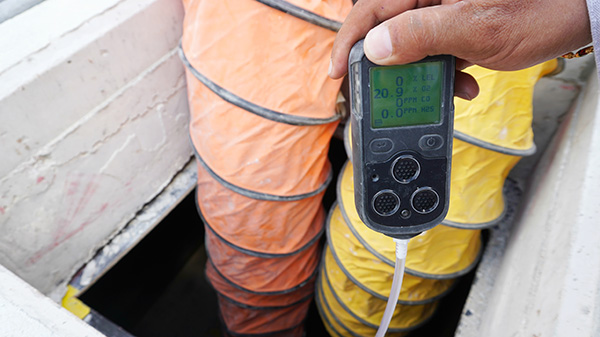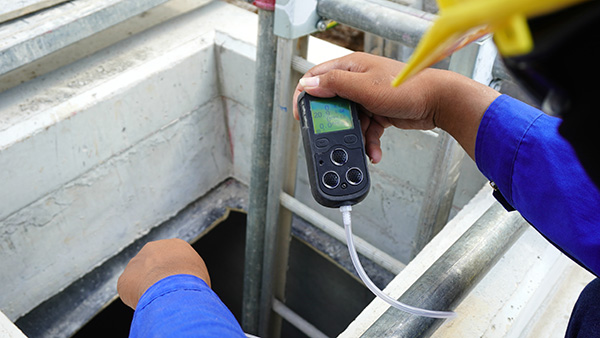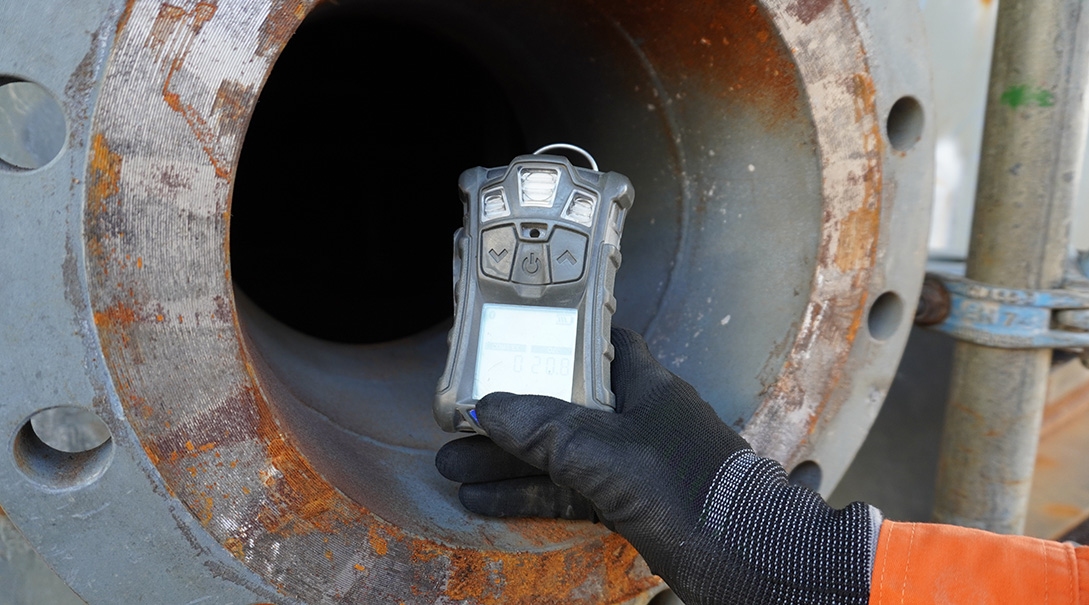Keeping your power plant safe and free of accidents is just as important as making sure that it’s profitable. Most plant operators are familiar with the dangers of electric shocks, falls, and fires. But fewer have as clear of an understanding of atmospheric hazards and how they impact safety.
We’ll take a look at what the atmospheric hazards of confined space are and let you know why it’s particularly important to pay attention to them.
What are Atmospheric Hazards?
Atmospheric hazards are airborne substances that either interfere with the body’s ability to use oxygen or have negative toxicological effects on humans, which can include:
- Oxygen deficiencies
- Dust
- Chemical vapors
- Fogs and mists
- Welding fumes
When humans come into contact with substances like these in sufficient quantities, serious and potentially even fatal accidents can occur. That’s why it’s important to think about volatile organic compounds and combustible gas buildup as you design a safety plan for your power plant.
Common Atmospheric Hazards in Confined Spaces
Atmospheric hazards are especially dangerous when they exist in confined spaces. That’s because confined spaces have minimal airflow, which means the toxicity builds up in them and has nowhere to go.
There are many different machines and products that can create an atmospheric hazard in a confined space. We’ll cover five of the most common examples of this below.
Generators In Confined Spaces
Many power plants rely on a multitude of generators to function. But when you run these, exhaust fumes are created. Those exhaust fumes need to have a safe way to exit your facility, or else they’ll contaminate it.
Carbon monoxide in confined spaces is the primary problem that comes from using generators without proper exhaust flow. Deadly levels can quickly build up in an area and may even linger in it for hours before dispersing.
Painting in Confined Spaces
 Painting in confined spaces is another danger that power plants need to avoid. The fumes of various coating products, paints, and industrial solvents can be toxic to humans.
Painting in confined spaces is another danger that power plants need to avoid. The fumes of various coating products, paints, and industrial solvents can be toxic to humans.
That’s why it’s a good strategy to always examine the air quality in an area before sending workers into it. That way, you can be sure that the paint or coating in a certain part of your plant won’t put your employees at risk.
Nitrogen Dioxide in Confined Spaces
Nitrogen dioxide in confined spaces can come from painting and running a generator without proper airflow.
This volatile organic compound can replace ambient oxygen from a confined area. And that can create a dangerous situation where the workers in a space are breathing in more toxic gas than they are oxygen.
Methane Buildup in A Confined Space
Methane is a highly-flammable gas that can cause explosions in your power plant. Explosions can occur when the percentage of methane in the air exceeds 5% but are likeliest to occur when levels rise above 9%.
There are a few different things that can cause excess methane to build up in a confined space, including:
- Gas leaks
- Petroleum hydrocarbon contamination in soil
- Decomposition of organic waste materials
Combustible gas buildup can have severe consequences if left unchecked. That’s why it’s always important to have functional combustible gas sensors placed strategically throughout your power plant.
Oxygen Deficiency in Confined Spaces
Oxygen deficiencies in a confined space can have several causes, including:
- Rust from tanks and pipes
- Combustion in a nearby area
- Microbial activity (such as fermentation)
- The displacement of oxygen with another gas like methane, nitrogen dioxide, or carbon monoxide
Obviously, humans need oxygen to breathe. So if there’s a shortage of it in certain parts of your power plant, your workers could begin experiencing symptoms ranging from impaired thinking and coordination to full-on convulsions and cardiac arrest.
OSHA’s Permissible Exposure Limit
The United States’ Occupation Health and Safety Administration (OSHA) sets strict limits for the percentage of hazardous substances that can be in the air at your power plant.
These limits are set based on 8-hour workdays and are designed to be protective across a 45-year career. So if you meet OSHA’s permissible exposure limits, you can have a high degree of confidence that you’re keeping your workers safe.
OSHA’s permissible exposure limits vary from substance to substance. For example, OSHA’s limit for airborne dust is 15mg per cubic meter. But the organization’s limit for carbon monoxide is 50ppm.
If you’d like to take a look at all of OSHA’s permissible exposure limits, you can do so here.
But once you know the limits, you need to develop a strategy for making sure that you hit them.
Meeting OSHA’s Permissible Exposure Limits
 Your power plant has three main tools to ensure that it complies with OSHA’s permissible exposure limits.
Your power plant has three main tools to ensure that it complies with OSHA’s permissible exposure limits.
First, you can use multi-gas meters to test the levels of hazardous materials in your power plant’s air. You should have these in every confined space that employees use, at the very least.
Second, you can train your employees and leaders to prioritize airborne hazard safety. That way, you don’t have to worry about this problem on your own.
Finally, you can sign up for regular safety audits. These will help you ensure that your power plant isn’t missing anything regarding atmospheric hazards in confined spaces.
Salvation Services Can Help You Manage Atmospheric Hazards In Confined Spaces
If you really want to ensure that your power plant isn’t at risk of atmospheric hazards, getting professional assistance can go a long way.
At Salvation Safety, we specialize in providing power plants like yours with the help they need to keep their employees and companies safe.
Whether you want to sign up for a safety audit to make sure you’re not missing anything, or your employees could use some training, we can provide you with the support you’re looking for.
Get in touch with us today to learn more about how we can help.


